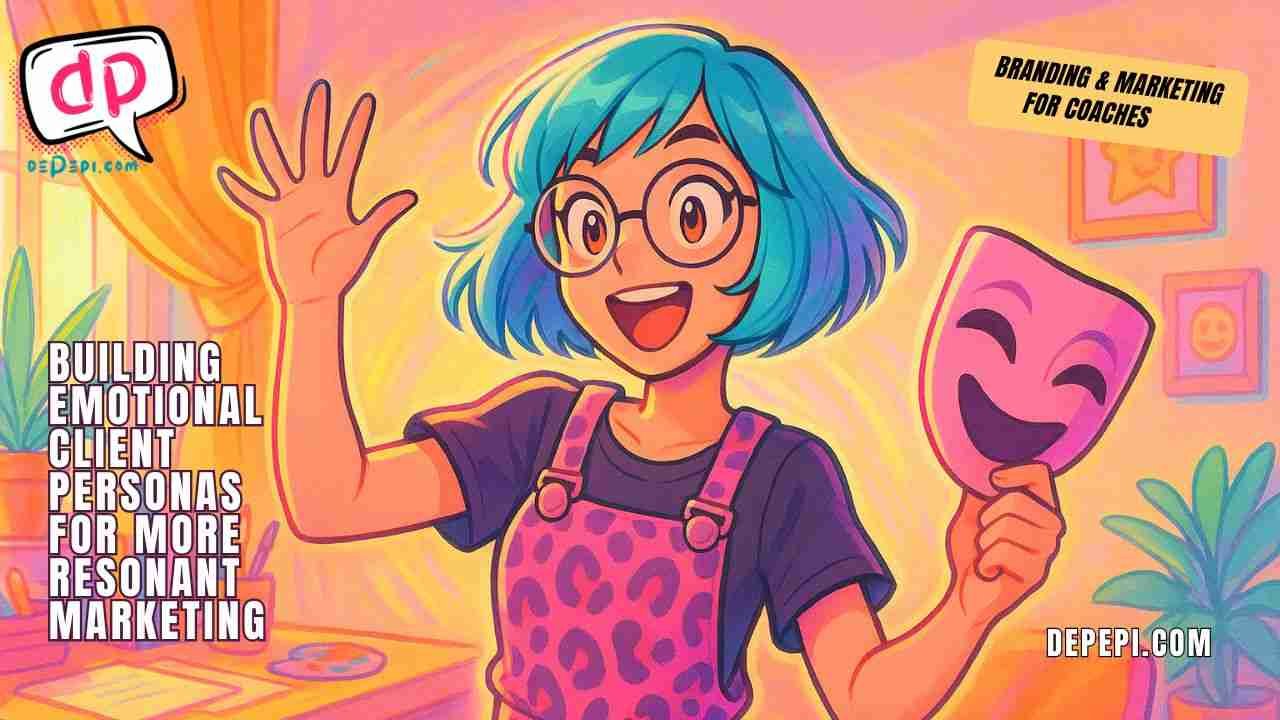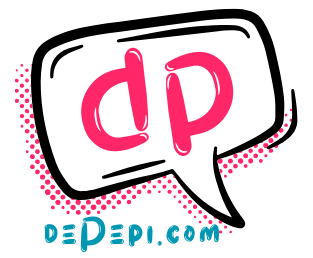Building Emotional Client Personas for More Resonant Marketing

The difference between a coach who struggles to find clients and one who has a waiting list isn’t talent; it’s understanding. You can achieve that by building emotional client personas.
Here’s a scenario that plays out every day: Two equally qualified life coaches create marketing content for “working mothers aged 30-45 with household incomes over $75k.” One gets crickets, and the other has discovery calls booked solid for the next month.
What’s the difference? The successful coach isn’t just speaking to demographics. She’s speaking to the woman lying awake at 2 AM, wondering if she’s failing her kids by working late again. She’s connecting with the mother who loves her career but feels guilty about missing another school play. She understands the internal battle between ambition and presence that keeps her ideal client up at night.
This is the power of emotional client personas, and it’s revolutionizing how smart coaches approach marketing.
Why Traditional client Personas Fall Short for Coaches
Let’s be honest: standard demographic personas are outdated and may alienate potential clients with generic messaging. When your ideal client avatar reads like a census report (“Sarah, 35, marketing manager, married with two kids, lives in suburbia”), you’re missing the entire emotional landscape that actually drives purchasing decisions.
Here’s what traditional personas get wrong:
- They assume demographics predict behavior. But a 35-year-old executive struggling with imposter syndrome has completely different needs than a 35-year-old executive dealing with work-life balance issues, even if they share the same job title and zip code.
- They focus on what people have, not how they feel. Your client’s income bracket doesn’t tell you about their relationship with money, success, or self-worth (the very things that might bring them to coaching).
- They create generic messaging. When you’re speaking to everyone, you’re connecting with no one. “I help busy professionals” could apply to millions of people, but it resonates with none of them.
For coaches specifically, this approach is particularly problematic because coaching is inherently emotional work. People don’t hire coaches because of their demographics—they hire coaches because of their internal experiences, struggles, and aspirations.
The Emotional client Persona Revolution
Emotional personas flip the script entirely. Instead of starting with external characteristics, you begin with internal experiences. Instead of asking “Who is my client?” you ask “What is my client feeling?”
This shift changes everything about how you market your coaching services.
- Traditional Persona: “I work with female entrepreneurs aged 25-40 who want to scale their businesses.”
- Emotional Persona: “I work with women who built successful businesses but feel like they’re drowning in their own success—caught between the fear of slowing down and the exhaustion of keeping up the pace they think success requires.”
See the difference? The second version immediately creates a connection because it speaks to a specific emotional experience, not just a business goal.
The Anatomy of an Emotional Persona
Building effective emotional personas requires going deeper than surface-level pain points. You need to understand the whole emotional ecosystem of your ideal client’s experience.
Layer 1: The Surface Struggle
This is what your client might initially say they need help with.
- “I want a better work-life balance.”
- “I need to be more confident.”
- “I want to find my purpose.”
These surface struggles are important, but they’re just the beginning.
Layer 2: The Underlying Emotions
What feelings are driving the surface struggle? Fear of judgment? Shame about not having it all figured out? Anger at feeling stuck? Grief over dreams deferred?
This emotional layer is where real connection happens because it’s where your client actually lives day-to-day.
Layer 3: The Hidden Beliefs
What does your client believe about themselves, their situation, or their possibilities that keeps them stuck?
- “I’m not leadership material.”
- “I don’t deserve success.”
- “Change is too risky at my age.”
These limiting beliefs often drive behavior more than conscious goals.
Layer 4: The Deepest Desires
Beyond the surface goals, what does your client really want? Often, it’s not about the specific outcome but about how they want to feel.
- Confident.
- Free.
- Aligned.
- Worthy.
- Peaceful.
Layer 5: The Identity Shift
Who does your client need to become to achieve what they want? This is often the most profound aspect of coaching work—helping someone step into a new version of themselves.
The Empathy-Driven Content Strategy
Once you have rich emotional personas, your content strategy transforms. Instead of generic tips and advice, you create content that speaks directly to specific emotional experiences.
For The Reluctant Leader
- “The Leadership Style No One Talks About (But Everyone Needs)”
- “What to Do When Success Feels Like Wearing Someone Else’s Clothes”
- “The Quiet Leader’s Guide to Authentic Authority”
Each piece of content immediately signals to your ideal client that you understand their specific experience, not just their job title.
Building Your Emotional Persona
Creating effective emotional personas requires intentional research and genuine curiosity about your clients’ inner worlds. Here’s the process I use:
Deep Listening
Start with your existing clients, past clients, and even prospects who didn’t hire you. Ask questions like:
- “What were you feeling the day before you reached out to me?”
- “What story were you telling yourself about your situation?”
- “What did you think would happen if nothing changed?”
- “What were you most afraid I’d think about you?”
Language Audit
Pay attention to the exact words your clients use to describe their experiences. Do they say they feel “overwhelmed” or “scattered”? Do they describe themselves as “stuck” or “lost”? These specific words become powerful in your marketing because they reflect how your clients actually think and speak.
Trigger Mapping
Identify what specific situations, thoughts, or experiences trigger your client’s emotional responses. Is it Sunday night anxiety about the week ahead? The moment they compare themselves to others on social media? The feeling of being the only one in the room who doesn’t know what they’re doing?
Aspiration Exploration
Go beyond surface goals to understand what your client really wants to feel. If they say they want a promotion, what would that promotion give them? Recognition? Security? Proof of worth? The feeling matters more than the outcome.
Obstacle Investigation
What’s really stopping your client from getting what they want? Often, it’s not external circumstances but internal barriers—such as fear, limiting beliefs, past experiences, or identity conflicts —that hold us back.
From Personas to Powerful Content
With rich emotional personas, your messaging becomes magnetic because it speaks to real human experiences rather than demographic categories.
- Instead of: “Struggling with work-life balance?” Try: “Tired of feeling like you’re failing at everything that matters most?”
- Instead of: “Ready to take your career to the next level?” Try: “What if you could be ambitious without feeling guilty about it?”
- Instead of: “Overcome limiting beliefs and achieve your goals.” Try: “That voice in your head that says you’re not qualified? Let’s change the conversation.”
Notice how the second versions immediately create emotional resonance? They speak to specific feelings and experiences rather than generic concepts.
The Relationship Revolution
Here’s where emotional personas create their biggest impact: they don’t just improve your marketing, they transform your client relationships.
When you truly understand your clients’ emotional landscapes, several things happen:
- Your discovery calls become deeper. You’re not just asking about goals and challenges; you’re exploring the emotional context that makes those goals meaningful.
- Your coaching becomes more targeted. You understand not just what your client wants to achieve, but why it matters to them and what might get in the way.
- Your client retention improves. When clients feel deeply understood, they’re more likely to continue working with you and refer others.
- Your confidence increases. You know exactly who you serve and how you help them, which makes everything from content creation to sales conversations feel more natural.
The Controversial Truth About Generic Messaging
Here’s what the coaching industry doesn’t want to admit: most coaches are afraid to get specific because they think it will limit their market.
They’d rather cast a wide net with generic messaging than risk “missing out” on potential clients.
However, when you try to speak to everyone, you end up connecting with no one. Generic messaging doesn’t expand your market. Instead, it makes you invisible in it.
The coaches who build thriving practices aren’t the ones with the broadest appeal. They’re the ones who create the deepest connection with their specific ideal clients.
This requires courage. It means saying no to clients who aren’t a perfect fit. It means creating content that some people won’t relate to. It means being willing to be polarizing rather than pleasant.
But the payoff is enormous: clients who feel genuinely understood, marketing that actually works, and a business built on authentic connection rather than generic appeal.
Strategic Integration Challenge
Understanding emotional personas is powerful, but it’s just one piece of a comprehensive marketing strategy. The real magic happens when you integrate emotional understanding with strategic brand positioning, content planning, and systematic client attraction.
This is exactly what I teach in my Branding and Marketing for Coaches course.
Branding and Marketing for Coaches (Life, Health, Wellness)
Emotional personas are incredibly powerful, but they’re even more powerful when they’re part of a strategic, comprehensive approach to building your coaching business.
The coaches who thrive aren’t just those who understand their clients deeply, but also those who know how to translate that understanding into sustainable business growth.
Your Emotional Persona Action Plan
Ready to revolutionize your marketing with emotional personas? Here’s where to start:
- Week 1: Conduct three deep-dive conversations with current or past clients. Focus on their emotional journey, not just their goals and outcomes.
- Week 2: Analyze the language patterns and emotional themes that emerge. What words do they use? What feelings come up repeatedly?
- Week 3: Create your first emotional persona, including all five layers: surface struggle, underlying emotions, hidden beliefs, deepest desires, and identity shift.
- Week 4: Audit your current marketing content. How much speaks to demographics versus emotions? Where can you make it more emotionally resonant?
- Week 5: Create three pieces of content specifically designed for your emotional persona. Test them and notice the difference in engagement and response.
The coaching industry is evolving. The coaches who succeed in the coming years won’t be the ones with the most certifications or the biggest social media followings. They’ll be the ones who create the deepest, most authentic connections with their ideal clients.
Emotional personas aren’t just a marketing tactic—they’re a philosophy of service. They represent a commitment to truly understanding the people you serve, not just as potential customers, but as complex human beings with rich inner lives.






